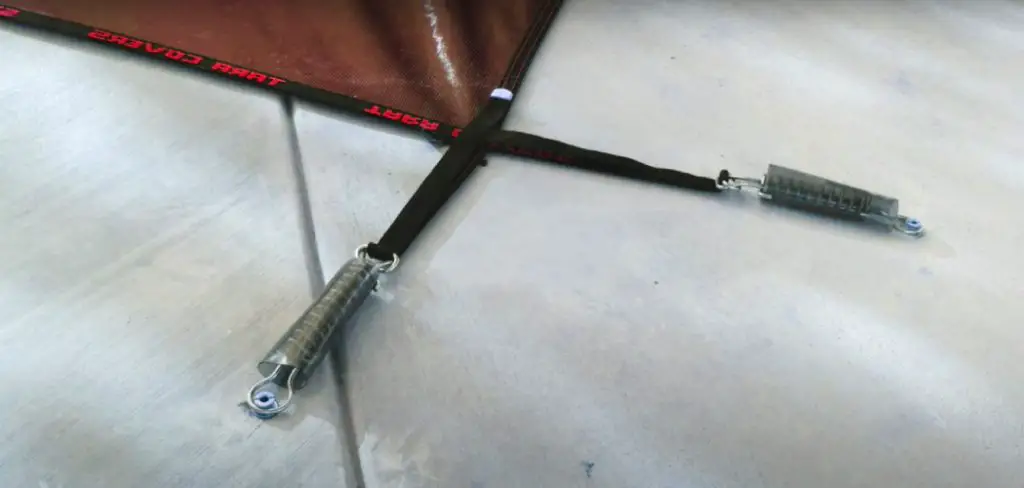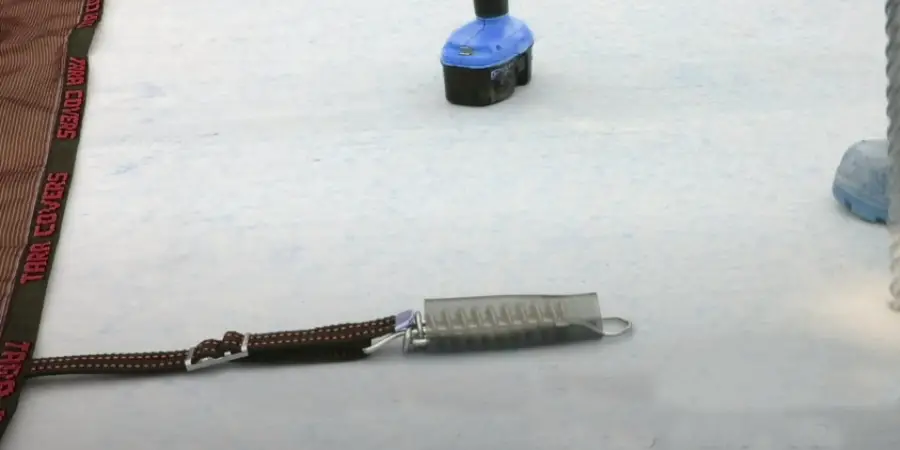Pool cover anchors hold your cover in place. They keep your pool safe, clean, and secure. Over time, anchors can loosen due to wear, poor installation, or external pressure. This guide explains why that happens, how to fix it, and how to prevent it from happening again. You’ll learn what tools to use, what materials work best, and how to spot early signs of anchor failure.

Note: Always follow your manufacturer’s instructions. Use the tools and specifications they recommend.
Why Pool Cover Anchors Become Loose
1. Bad Installation
- Used the wrong drill bit size for the anchor
- Hole is too shallow (should be 2.75–3.5 inches deep for concrete decks)
- Anchors spaced too far apart or unevenly
- Low-quality tools or incorrect techniques used during installation
2. Force and Vibration
- Wind or water puts pressure on the cover and pulls on the anchors
- Vibrations from pool equipment or foot traffic can cause anchors to shift
3. Wrong Anchor Size
- Undersized anchors can’t handle the load of solid or heavy pool covers
4. Low-Quality Materials
- Poor metals rust quickly in wet conditions
- Plastic components may crack, weaken, or break under tension
5. Impact Damage
- People stepping on anchors or dropping tools can knock them loose
- Heavy objects like ladders or furniture falling on them may cause shifting
Tools and Materials
- Hammer drill with correct bit (1/2″, 5/8″, or 3/4″, as required)
- Flathead screwdriver or hex key
- Torque wrench (set to 15–25 ft-lbs or 180–300 in-lbs)
- Pool-safe epoxy or anchor cement for damaged holes
- Brass or stainless-steel anchors
- Safety gloves, goggles, and non-slip shoes
How to Fix Loose Anchors
1. Remove the Anchor
- Unscrew the anchor with a flathead screwdriver or hex key
- Use pliers or a chisel if it is stuck or stripped
2. Clean the Hole
- Remove debris using a wire brush or compressed air
- If needed, drill the hole slightly deeper to reach firm material
3. Reinstall or Replace the Anchor
- Do not use thread locker, as it prevents removal later
- For loose holes, use epoxy or hydraulic cement
- Place the anchor flush with the surface and level
- Use a torque wrench to tighten it to the correct torque setting
4. Test the Anchor
- Gently pull the strap connected to the anchor
- If there is movement, re-check the depth and torque
Fixing Repeat Problems
Move the Anchor
- Relocate the anchor to a nearby area with stronger concrete
- Follow manufacturer spacing guidelines (ranges from 18 inches to 8 feet)
Use Larger or Stronger Anchors
- Residential anchors: 300–600 lbs load capacity
- Commercial anchors: 1000 lbs or more
Add More Anchors or Straps
- Distributes force evenly and reduces stress on each point
- Especially helpful in windy areas, large pool decks, or older installations

Anchor Types and Materials
| Type | Material | Best Use | Advantages | Limitations |
| Drop-in Anchor | Brass/Stainless | Concrete pool decks | Rust-resistant | Requires precision |
| Wedge Anchor | Steel | Permanent installations | Strong grip | May corrode over time |
| Sleeve Anchor | Brass | Pavers or concrete | Easy to replace | Lower strength rating |
Check it out: Drop-In Anchor vs. Wedge Anchor
- Brass: Resists rust, budget-friendly, commonly used
- Stainless Steel: Long lifespan, ideal for coastal and humid areas
- Steel: Very strong, but needs rust protection
Safety Tips
- Wear protective gloves and safety goggles
- Use battery-powered tools near water to avoid electric shock
- Keep anchors retracted when not in use to prevent trips
- Keep a first aid kit nearby during installation or repair
Maintenance Tips
- Inspect anchors before and after each pool season
- Look for rust, stripped threads, or wobbly movement
- Flush anchors with water and apply silicone spray if needed
- Use anchor caps or covers in the off-season
- Keep an anchor maintenance checklist
Repair or Replace?
| Problem | Likely Cause | Recommended Fix |
| Anchor spins in hole | Hole too wide or stripped | Drill and fill with epoxy |
| Anchor rises | Installed too shallow | Remove and drill deeper |
| Strap pulls loose | Threads are worn | Replace the anchor |
Call a professional if:
- You are unsure about your deck material
- Several anchors are loose or failing
- Your pool has an automatic cover system that requires specialized parts
Cost Guide
| Item | Estimated Price (USD) |
| Brass Anchor | $5–$10 each |
| Stainless Anchor | $10–$20 each |
| Drill Rental | $25–$50 per day |
| Professional Installation | $10–$25 per anchor |
| Epoxy or Cement | $5–$15 per tube |
- DIY Repair Cost: $20–$100
- Full Anchor Replacement: $200–$500 depending on pool size and number of anchors
Weather and Chemical Exposure
- Cold temperatures cause concrete to expand and contract, shifting anchors
- Chlorine, saltwater, and pool chemicals corrode lower-grade metals
- Sunlight and UV exposure weaken plastic parts over time
- Covers that remain wet can promote rust and mold growth around anchors
Related Information
- Mesh pool covers require fewer anchors than solid covers
- Automatic covers often use their own anchor systems
- DIY repairs may void some warranties, so check before modifying parts
- Use the same brand for all replacement anchors if possible for consistency
Summary
Loose anchors can make your pool cover unsafe. Fixing them is simple with the right tools and knowledge. Always inspect your anchors before each season. Choose quality materials, follow the correct steps, and watch for signs of wear. A secure cover keeps your pool clean, protects your family, and extends the life of your investment. Share this guide with other pool owners who need to repair or maintain their anchors.
Read More –
